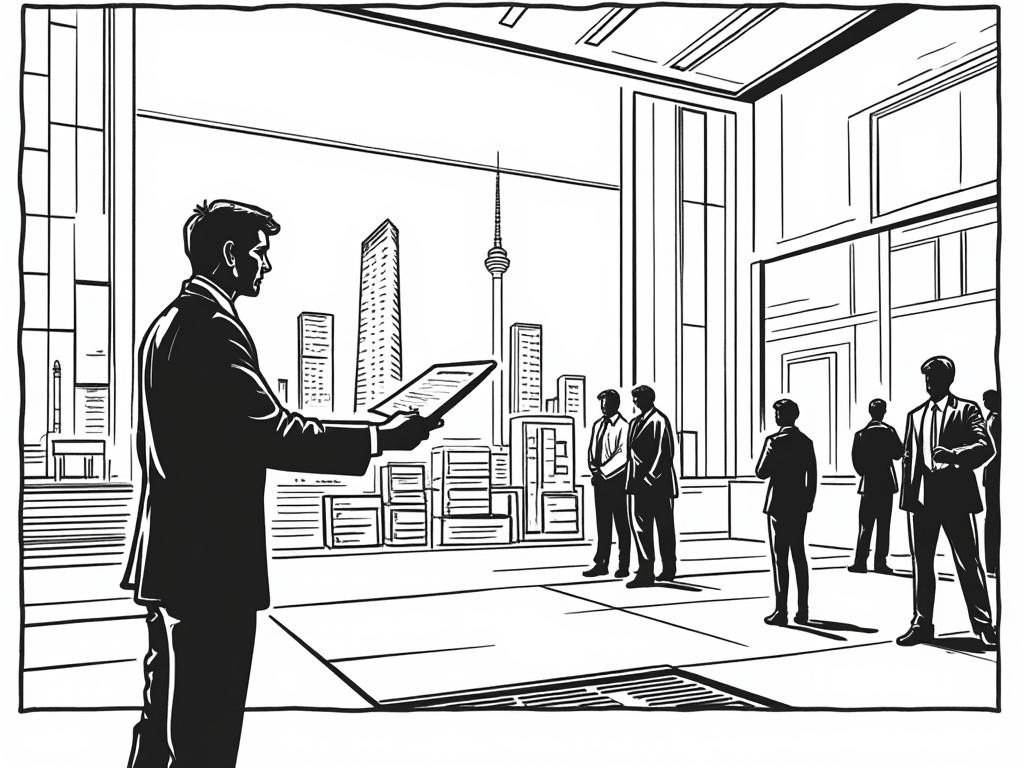
UAE Court Reforms: Transforming Justice Through Digital Innovation
Reading time: 11 minutes
Table of Contents
- Introduction to UAE’s Judicial Transformation
- Historical Context: UAE’s Legal Evolution
- Key Judicial Reforms Reshaping UAE Courts
- Impact Analysis: Measuring Reform Success
- Case Studies: Reform Implementation in Action
- Implementation Challenges and Solutions
- UAE Courts in Global Context
- Future Directions: The Road Ahead
- Navigating the New Judicial Landscape
- Frequently Asked Questions
Introduction to UAE’s Judicial Transformation
Ever felt overwhelmed by the complexities of legal proceedings? You’re not alone. The UAE’s judicial system has undergone remarkable transformation in recent years, shifting from traditional paper-based processes to cutting-edge digital solutions. This evolution isn’t merely technological—it represents a fundamental reimagining of how justice is administered, accessed, and experienced.
The UAE’s vision for judicial excellence extends beyond modernization for its own sake. It’s about creating a legal framework that supports the nation’s economic ambitions, enhances investor confidence, and provides expedient justice for residents and citizens alike. With the implementation of judicial reforms, the UAE has demonstrated its commitment to establishing a world-class legal system that balances efficiency with fairness.
Let’s dive into how these reforms are reshaping the legal landscape, what they mean for businesses and individuals, and how they compare to international benchmarks. Whether you’re a legal professional, business owner, or expatriate navigating the UAE’s legal system, understanding these changes is crucial for effective engagement with the courts.
Historical Context: UAE’s Legal Evolution
The UAE’s legal system has evolved from a complex tapestry of Islamic Sharia principles, civil law influences, and local customs. Following the federation’s formation in 1971, each emirate maintained significant judicial autonomy, leading to procedural variations across the country. This historical fragmentation presented challenges for consistency and nationwide legal cohesion.
By the early 2000s, the rapid economic development and increasing international presence in the UAE highlighted the need for more standardized and efficient judicial processes. The establishment of specialized courts—like the DIFC Courts in 2004—marked the beginning of a new era in the UAE’s legal approach, introducing common law principles alongside the existing civil law system.
The real watershed moment came in 2017 when the Ministry of Justice unveiled its ambitious judicial innovation strategy. This marked the transition from isolated improvement efforts to a comprehensive vision for judicial transformation. The UAE recognized that to maintain its position as a leading global business hub, its judicial system needed to match its economic sophistication.
Key Judicial Reforms Reshaping UAE Courts
The UAE’s judicial reforms have been implemented through a series of strategic initiatives, legislative changes, and technological innovations. Let’s explore the most significant developments that are reshaping how justice is delivered across the emirates.
Digital Transformation Initiatives
The cornerstone of UAE’s judicial modernization has been its embrace of digital technologies. The introduction of the “Smart Courts” initiative has revolutionized court operations through several key components:
- Remote Court Hearings: The COVID-19 pandemic accelerated the adoption of virtual hearings, now a permanent feature allowing participation from anywhere in the world.
- Digital Case Filing: The implementation of comprehensive digital filing systems has eliminated the need for physical document submission, reducing processing times from weeks to hours.
- AI-Powered Legal Research: Sophisticated algorithms assist judges and legal professionals in researching precedents and relevant case law, enhancing decision-making quality and consistency.
- Blockchain for Evidence Management: Several courts have piloted blockchain solutions to maintain the integrity and authenticity of digital evidence.
The digital transformation extends to user experience as well. Court websites and mobile applications now offer intuitive interfaces for case tracking, document submission, and fee payment. For example, the Dubai Courts mobile app provides comprehensive services that previously required multiple in-person visits.
Quick Scenario: Imagine you’re a business owner facing a contract dispute. Before the reforms, you would need to physically visit the court multiple times—to file documents, pay fees, check case status, and attend hearings. Now, you can manage the entire process digitally, potentially without ever setting foot in a courthouse until the final hearing (if even then).
Procedural Efficiency Improvements
Beyond technology, the UAE has implemented structural and procedural reforms to streamline the judicial process:
- Case Management Protocols: New protocols categorize cases by complexity, assigning appropriate resources and timelines to each.
- Alternative Dispute Resolution (ADR): Expanded mediation and arbitration options divert suitable cases from traditional litigation, reducing court backlogs.
- Judicial Specialization: The creation of specialized courts for commercial, labor, and family matters ensures cases are heard by judges with relevant expertise.
- Simplified Small Claims Procedures: Expedited processes for claims below certain thresholds allow for faster resolution of minor disputes.
Pro Tip: The right preparation isn’t just about avoiding procedural pitfalls—it’s about leveraging these new efficiencies to your advantage. Familiarize yourself with the appropriate specialized court for your matter, and consider the ADR options available before proceeding to litigation.
Impact Analysis: Measuring Reform Success
The success of judicial reforms can be measured through several key metrics that reflect both efficiency and quality of justice. Here’s how the UAE’s reforms have performed against important indicators:
| Performance Indicator | Pre-Reform (2016) | Post-Reform (2022) | Improvement | Global Benchmark |
|---|---|---|---|---|
| Average Case Duration | 495 days | 160 days | 68% reduction | 200 days (OECD average) |
| Cost of Litigation (% of claim) | 19.5% | 13.2% | 32% reduction | 21.5% (World Bank data) |
| Digital Service Adoption | 18% | 87% | 69% increase | 65% (Leading digital economies) |
| User Satisfaction Rating | 72% | 89% | 17% increase | 76% (International average) |
| Enforcement Success Rate | 65% | 92% | 27% increase | 85% (Best practice standard) |
According to Judge Ahmed Al Dhanhani, Head of the UAE Courts Digital Transformation Committee: “Our reforms aren’t merely about technology adoption—they represent a fundamental shift in how we conceptualize justice delivery. The metrics show impressive efficiency gains, but equally important is the enhanced quality of judicial outcomes and improved access to justice.”
These improvements have contributed to the UAE’s improved ranking in the World Bank’s Enforcing Contracts indicator, climbing from 25th globally in 2016 to 9th in 2022.
Case Resolution Efficiency by Court Type
Case Studies: Reform Implementation in Action
Case Study 1: Abu Dhabi’s Digital Evidence Management System
In 2020, Abu Dhabi Judicial Department implemented a comprehensive digital evidence management system that revolutionized how evidence is handled in criminal and civil proceedings. The system allows for secure electronic submission, authentication through blockchain technology, and streamlined access for all authorized parties.
Before this system, a complex commercial fraud case involving thousands of documents took an average of 14 months to process. The first major case processed through the new system—a multi-million dirham commercial dispute with over 8,000 evidentiary documents—was concluded in just 5 months. The digital system eliminated document transportation delays, simplified evidence organization, and allowed simultaneous examination by multiple experts.
As defense attorney Fatima Al Blooshi noted, “The difference is night and day. Previously, our team spent weeks physically organizing evidence binders. Now we can focus entirely on case strategy rather than administrative burdens.”
Case Study 2: Dubai’s Smart Small Claims Process
Dubai Courts’ implementation of a fully digital small claims process has transformed how minor commercial disputes are resolved. The system incorporates an AI-powered initial assessment that helps users understand the strength of their claim and suggests appropriate resolution paths.
For example, when SME owner Raj Sharma filed a claim for an unpaid invoice of 75,000 AED, the system guided him through document submission, automatically scheduled a mediation session, and facilitated a settlement agreement—all without requiring a single court visit. The entire process took 12 days from filing to resolution, compared to the previous average of 45 days.
According to court statistics, the smart small claims process has achieved an 82% settlement rate before full litigation, freeing judicial resources for more complex cases while delivering faster outcomes for businesses.
Implementation Challenges and Solutions
While the UAE’s judicial reforms have achieved remarkable success, the transformation journey hasn’t been without obstacles. Understanding these challenges provides valuable insight into the complexity of judicial modernization:
- Digital Literacy Disparities: Not all court users possess equal digital skills. To address this, courts established Digital Assistance Centers where staff help users navigate online systems. Additionally, simplified interfaces with multiple language options have improved accessibility.
- Cybersecurity Concerns: The digitization of sensitive legal proceedings raised legitimate security questions. The UAE responded by implementing multi-factor authentication, end-to-end encryption, and regular security audits to protect digital court systems.
- Integration of Legacy Data: Converting historical case records presented significant technical challenges. The solution involved a phased digitization approach, prioritizing active cases while gradually incorporating archived materials.
- Judicial Training Requirements: Judges and court staff needed extensive training to effectively utilize new technologies. Specialized judicial digital academies now provide continuous education and certification programs.
These implementation challenges reflect the reality that judicial reform is as much about people and processes as it is about technology. The UAE’s approach has been to address technical and human factors in parallel, recognizing that successful digital transformation requires both sophisticated systems and skilled users.
UAE Courts in Global Context
How do the UAE’s judicial reforms compare internationally? Let’s place these developments in global context:
The UAE’s approach to judicial modernization shares similarities with other leading jurisdictions like Singapore and South Korea, which have also embraced comprehensive digital transformation. However, the UAE stands out for the pace and scope of its reforms. While many jurisdictions have implemented piecemeal improvements, the UAE has pursued system-wide transformation.
The World Justice Project’s Rule of Law Index highlights areas where the UAE has made particular progress. Between 2016 and 2022, the UAE improved significantly in the “Civil Justice” category, particularly in the sub-factors of “No unreasonable delay” and “Accessibility and affordability.”
One distinctive aspect of the UAE’s approach is its willingness to incorporate innovations from both civil and common law traditions, creating a hybrid system that leverages the strengths of multiple legal frameworks. This flexibility has allowed the UAE to adopt best practices from diverse judicial systems worldwide.
For foreign investors and international businesses, these reforms have particular significance. As legal consultant Maria Rodriguez explains, “The predictability, transparency, and efficiency created by these reforms significantly enhances the UAE’s attractiveness as an investment destination. Clients who previously had reservations about dispute resolution in the region now express confidence in the system.”
Future Directions: The Road Ahead
The UAE’s judicial modernization journey continues to evolve, with several emerging trends and planned initiatives that will shape the next phase of reform:
- AI-Enhanced Judicial Decision Support: Research is underway to develop AI systems that can analyze case patterns and precedents to assist judges in maintaining consistency across similar cases.
- Predictive Justice Analytics: Using data from resolved cases to provide parties with probabilistic outcomes based on case characteristics, potentially encouraging earlier settlements.
- Cross-Border Digital Integration: Efforts to establish protocols for seamless digital collaboration with other judicial systems, particularly within the GCC.
- Expanded Multilingual Capabilities: Development of real-time translation services to eliminate language barriers in court proceedings.
These forward-looking initiatives reflect the UAE’s understanding that judicial modernization is not a destination but a continuing journey. The next frontier appears to be leveraging advanced data analytics to not only improve efficiency but enhance the quality and consistency of judicial decisions themselves.
For businesses considering options like the dubai golden visa cost and other long-term investment in the UAE, these ongoing judicial improvements provide additional confidence in the country’s commitment to world-class legal infrastructure.
Your Strategic Roadmap: Navigating the New Judicial Landscape
Understanding reforms is valuable—but knowing how to leverage them for practical advantage is essential. Here’s your action-oriented roadmap for effectively navigating the UAE’s transformed court system:
- Audit Your Digital Readiness: Ensure your organization has the necessary digital capabilities to interact with court platforms, including secure document storage, digital signature capabilities, and video conferencing facilities.
- Develop a Dispute Resolution Strategy: Review your contracts and business processes to incorporate the expanded ADR options now available. Consider including tiered dispute resolution clauses that exploit the new system’s efficiencies.
- Invest in Training: Ensure your legal team or external counsel is fully versed in the digital court systems. The efficiency gains from reforms can be negated if your representatives struggle with the technology.
- Maintain Digital Evidence Protocols: Implement procedures for preserving potential evidence in digital format that meets court admissibility standards, reducing scrambling if disputes arise.
- Leverage Predictive Insights: As courts publish more data about case outcomes, use this information to better assess litigation risks and set realistic expectations for stakeholders.
The transformed judicial landscape rewards preparation and digital fluency. Those who understand not just the changes themselves but how to strategically align their practices with these new realities will enjoy significant advantages in legal proceedings.
Well, here’s the straight talk: Success in the UAE’s new judicial environment isn’t about navigating the old system faster—it’s about embracing an entirely new paradigm of justice delivery. The question isn’t whether you’ll adapt to these changes, but how quickly and effectively you’ll leverage them to your advantage.
Frequently Asked Questions
How have the UAE’s judicial reforms affected case processing times?
The reforms have dramatically reduced case processing times across all courts. Commercial disputes that previously took 495 days to resolve now average 160 days—a 68% reduction. This improvement stems from streamlined digital filing, automated scheduling, and more efficient case management protocols. Small claims and straightforward civil matters have seen even more dramatic reductions, with some simple proceedings now concludable within a single day through fully digital processes.
Are digital court services available in multiple languages?
Yes, the UAE’s court digital platforms currently support Arabic and English interfaces, with selected services also available in Hindi, Urdu, and Filipino to accommodate the diverse population. Court documents still require Arabic as the official language, but digital translation assistance is integrated into many platforms. The future roadmap includes expanding to additional languages and implementing real-time translation services for live proceedings. For complex matters, it’s still advisable to work with legal representatives fluent in Arabic.
How do the judicial reforms affect foreign businesses operating in the UAE?
Foreign businesses have benefited significantly from these reforms. The digital transformation enables overseas entities to participate in proceedings without extensive travel, while procedural streamlining has reduced both the time and cost of dispute resolution. Specialized commercial courts with judges experienced in international business law have improved decision quality and predictability. Additionally, the integration of common law elements in certain courts (like DIFC Courts) offers familiar legal frameworks for businesses from common law jurisdictions. These improvements collectively strengthen the UAE’s position as a business-friendly environment with reliable legal recourse.

Article reviewed by Diego Navarro, Retirement Portfolio Manager | Safe & Steady Growth Strategies, on May 16, 2025




